How new dairy entrants raised funds with no fixed assets
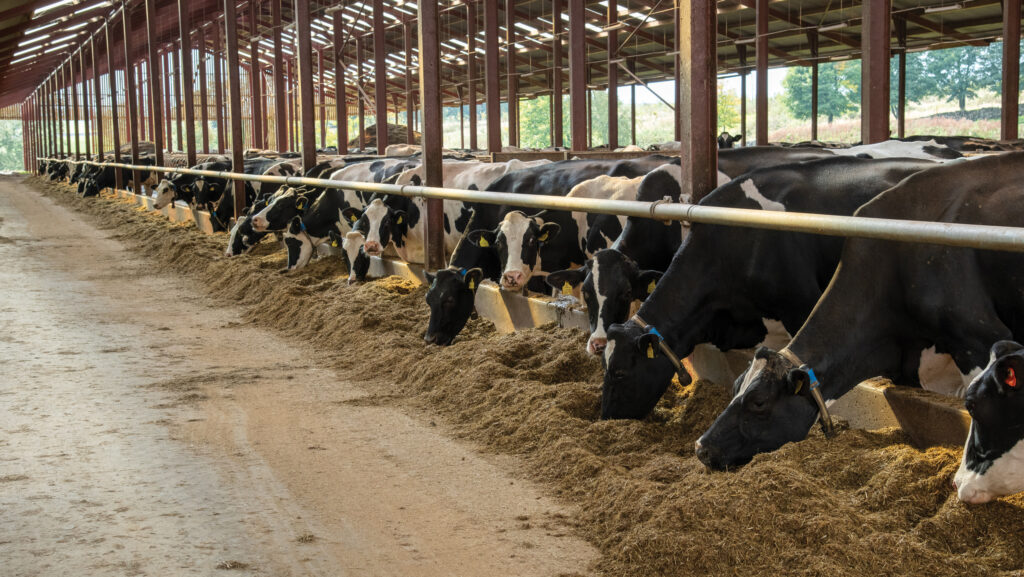 © John Eveson
© John Eveson From 27 sheep and a handful of beef just over a decade ago, Cumbrian tenant farmers Matt and Lissy Stephenson have established a 900-cow herd yielding 13,400 litres a cow a year.
With no fixed assets of their own, their rapid evolution is a result of dogged determination, an eye for technical excellence, industry support and engagement with lenders.
This has enabled them to secure finance and ride out periods of intense uncertainty.
See also: Advice for dairy farms on accessing finance for growth
Farm Facts Wintertarn, Newby, Penrith, Cumbria
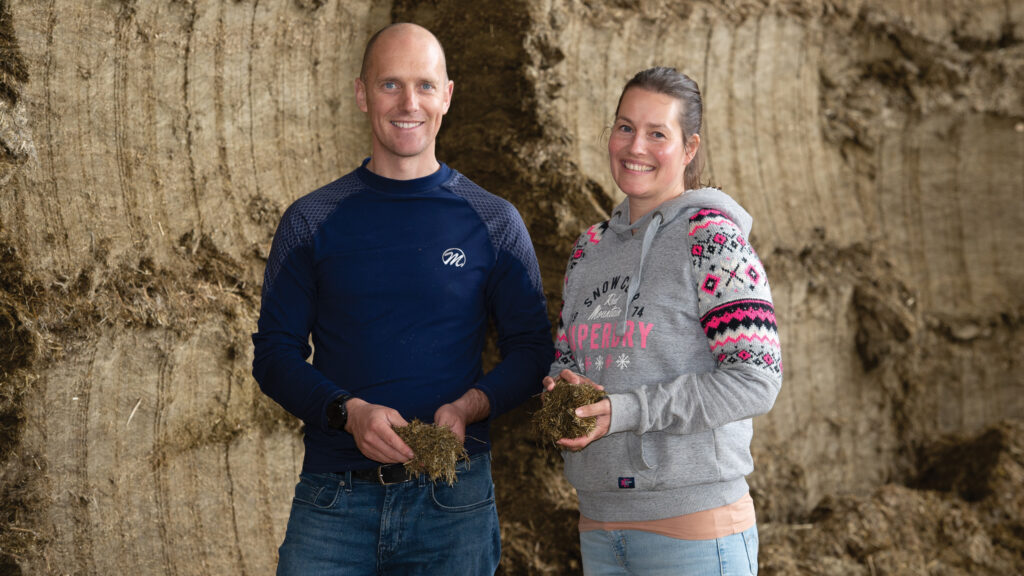
Matt and Lissy Stephenson © John Eveson
- Partnership between Matt and Lissy Stephenson
- 526ha total farmed (all tenanted)
- 900-cow Atlas herd of pedigree Holsteins
- Milking three times a day
- Yielding 13,400 litres a cow a year
- Sexed and beef strategy using British Blue on cows
- Beef sold privately at two weeks old
- 70 British Blue-cross calves retained, grazing environmental scheme leys and sold at 18 months
In 2014, the Stephensons came very close to losing their new business.
An unforeseen delay in taking on their new 15-year tenancy meant they were late drawing down a £180,000 loan from one of the high-street banks.
During that time, the milk price crashed from 35p/litre to 21p/litre, and their offer was suddenly withdrawn.
“We were in severe financial stress at that point,” Matt recalls.
It was then a choice between giving up, “tail between legs”, or carrying on.
The lack of fixed assets meant the main banks would not lend money, so they took on short-term, high-interest loans from second-tier banks in the hope milk price would rebound.
Investment to raise performance
That money was used to invest in the farm’s crumbling infrastructure and drive herd performance. High payments meant high yields were a necessity to generate cash.
Housing cows and intensifying also suited the farm’s elevated location, where rain is plentiful and heat stress is not an issue.
“There’s no way we could keep spending that amount of money if we hadn’t raised the performance of the herd,” Matt says.
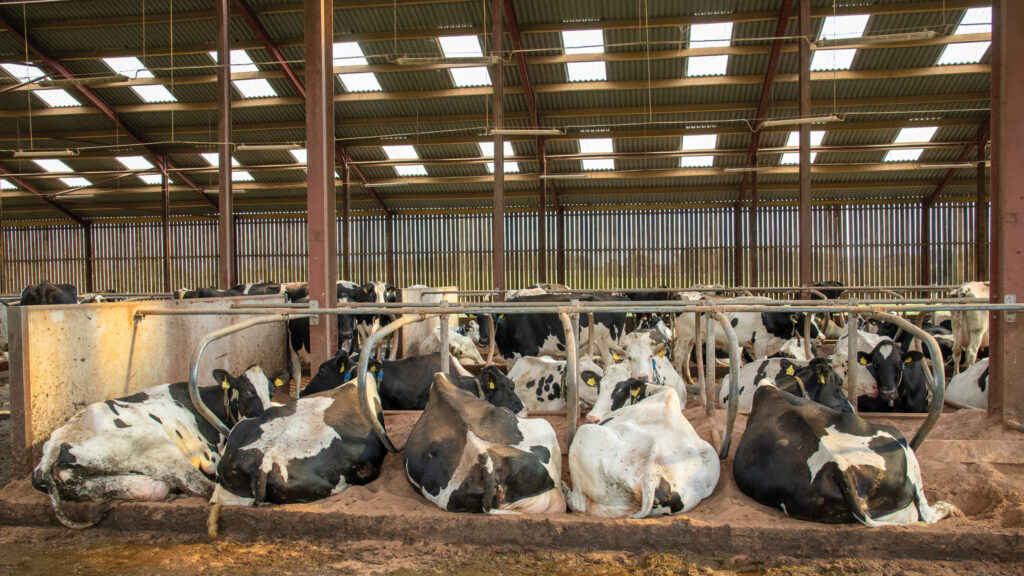
© John Eveson
“We might have been doing 8,500 litres when we first got going in poor [infrastructure] conditions.
“If we were only doing that level now, I think we would have lost the confidence of the bank, as we wouldn’t have the profit.”
Having excellent technical performance has been fundamental in securing lending.
This was particularly the case in 2021 when the farm’s consultant, David Keiley of Kite Consulting, suggested approaching specialist agricultural bank Oxbury to finance further infrastructure investment.
Where high-street banks use fixed assets as security, Oxbury places a value on youngstock, deadstock, plant and machinery. This proved a game changer.
“Even though we were under the cosh financially, we were focused on our cows, and we were getting decent performance from them in poor facilities.
“So [Oxbury] had the faith that if we got better facilities, we would get even better performance from our cows.”
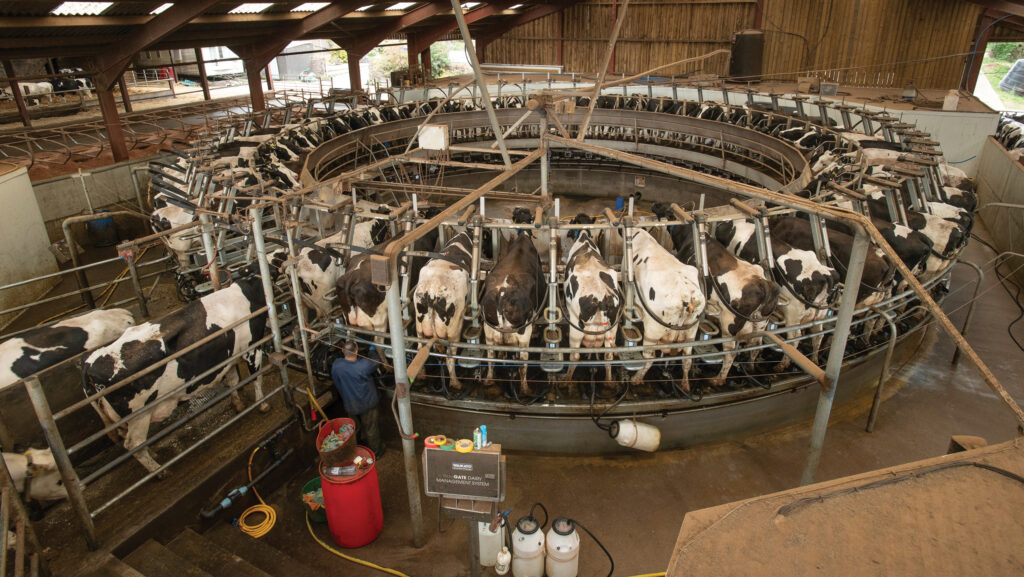
© John Eveson
Return on investment
The fact that a clear return on investment was assigned to every proposition was also attractive.
For example, increasing cow numbers had raised milk volume, while a new parlour improved milking efficiencies and reduced standing times.
These translated into a yield uplift of 2 litres a cow a day.
Moving cows out of old facilities into new buildings with sand cubicles also improved cow comfort, leading to an increase of 5 litres a cow a day.
“We built the whole system around sand bedding because cow comfort is king and that’s how we get good yields now, because cows are milked quickly and efficiently.
“They’ve got super-comfy beds and loads of room, loads of air, loads of feed space, loads of water,” Matt explains.
“We’ve never skimped on the housing or the cattle.
“We’ve never gone the cheap route because we know we’ve got a high fixed-cost base that we need to dilute by getting the litres per cow and profitability per cow to the max.”
Thirteen years of hard graft have paid off, with the Stephensons set to finish investing in the farm in the next 12 months, raising the possibility of buying a farm in the future.
Wintertarn farming and investment timeline
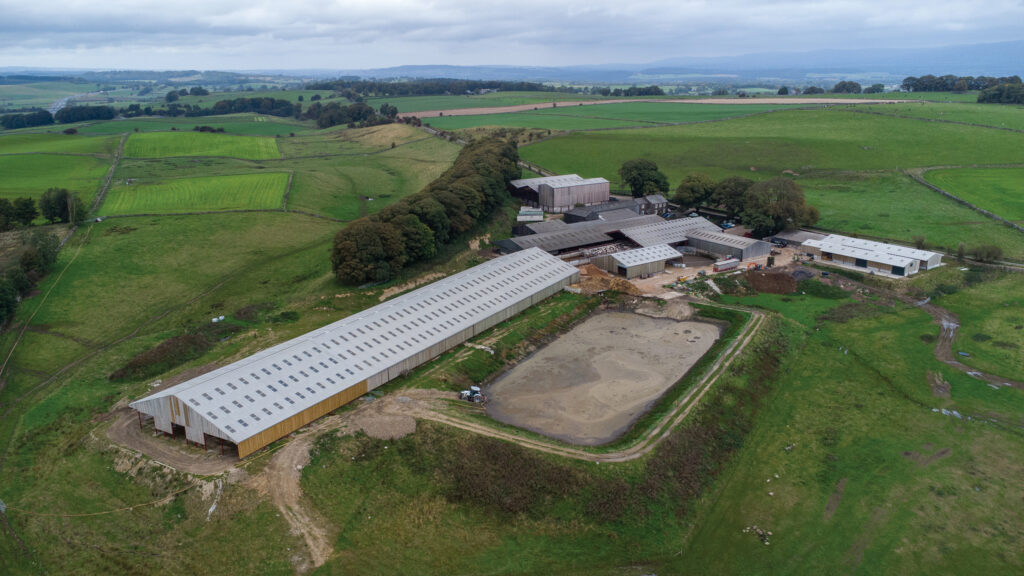
© John Eveson
2003 Matt and Lissy Stephenson take on 16ha (40-acre) tenant farm of rush and bog plus various pockets of land and build to 850 sheep and 160 beef cattle.
2009 Move to nearby 97ha (240-acre) fell farm with a 15-year tenancy. Grow to 1,100 sheep and 200 cattle and invest in a livestock building using cash from the business.
Use this as an advert for good management to a prospective landlord.
2014 Offered and take up tenancy on two neighbouring farms.
Secure Arla milk contract, sell the beef, buy 120 milking cows, and secure a £180,000 loan from a high-street bank.
Late 2014 Loan withdrawn when milk price crashes, and income from cattle bed-and-breakfast arrangement fall through.
2015 The Dairy Futures charity (now the Let’s Farm Foundation) agrees to lend £60,000 in a competitive process to let the Stephensons increase cow numbers.
2016 Take on variety of loans from second-tier banks totalling about £250,000 at 13-15% over five years in the hope the milk price will increase. Invest in infrastructure.
2019 Secure loan (based on milk price rises) from De Lage Landen Bank for a 54-point rotary to reduce milking times and safeguard against post-Brexit labour shortages.
2021 Oxbury Bank agrees to finance 300-cow shed, three silage pits, 4m gallon lagoon, calf shed and transition shed over 10-12 years at a competitive rate, comparable with high-street bank rates.
Tips for securing finance with no fixed assets
1. Engage with the landlord, explain the purpose of the proposed investment, and get written consent from them that can be shown to the bank.
2. Working with a consultant is invaluable in understanding figures and drawing up a business plan.
3. Be good on technical performance and KPIs (in-calf rate, cost of production and so on). Lenders will also look at staff management/retention.
4. Present lenders with:
- Three years of accounts. Pull together accounts immediately after year end. If these are not available, use financial software to draw up an up-to-date position
- Details of credit agreements/loans/overdrafts
- Milk statements and bank statements
- Cashflow forecasts (undertake monthly)
- Profit and loss forecasts.
5. Understand the return on investment of the projects requiring finance – for example, a new shed will deliver an extra 3,000 litres because of improved cow comfort. On a tenanted farm, investment must see a return within the lifetime of the tenancy. Be conservative when making assumptions.
6. Stick to budget – borrow enough to complete a project. Coming in on time and on budget will leverage greater future lending potential with the bank.
7. Work with suppliers (vets, feed merchants and so on), explain the situation and whether there might be difficult times ahead. Be loyal when they stand by you.
8. Attending benchmarking groups and undertaking dairy costings demonstrate a will to improve and tick big boxes for lenders, as does engaging with professional advisers.
Source: Oxbury Bank senior agricultural relationship manager Mel Shipley, Kite consultant David Keiley and farmer Matt Stephenson
